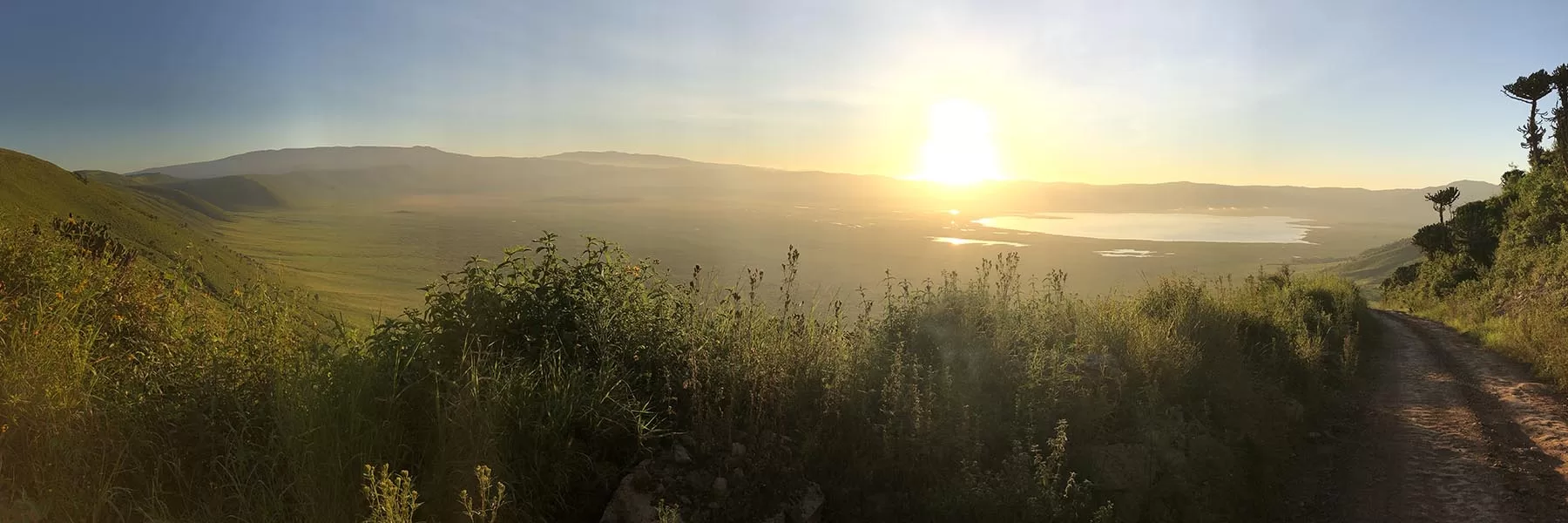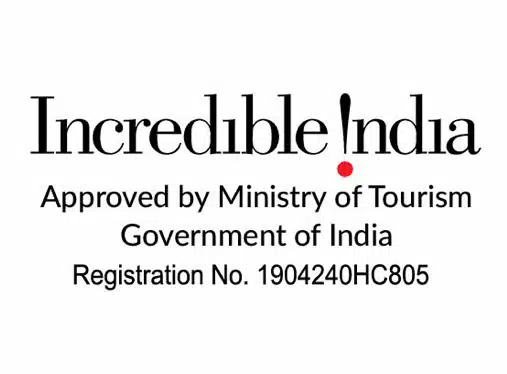History
The Ngorongoro conservation area (not to be confused with Ngorongoro crater, which is a small part of it) was established in 1959 and was awarded the status of World Heritage Site in 1979. The area is protected from intensive poaching and exploitation, protected by numerous restrictions serving three main objectives:
- To promote the conservation of natural resources
- To protect the interests of the local people
- To encourage ecotourism
The Ngorongoro conservation area is also the site of Olduvai Gorge, the earliest evidence of mankind’s existence and evolution. The name, Olduvai, is originated from the Masai word, Oldupai, meaning “the place of the wild sisasi”, a flowering plant that grows abundantly here. The steep gorge is about 48 kilometres long and 90 metres deep. It stretches from Lake Masek in the east to the Olbalbal swamp near Olmoti in the west. The place is famous for being the world’s largest unbroken Caldera, which is a cauldron-like depression formed from magma emitted by a large volcano. Strong seismic activity about 500,000 years ago created rifts in the sedimentary rocks and revealed the different layers in the walls of the gorge.
The gorge is one of the most significant archaeological sites in the world. Numerous extinct species and remains of hominids have been brought into the light following multiple archaeological expeditions conducted here. Fossil remains of extinct three-toed horses were discovered in 1911, and a hominid skeleton in 1913. It was possible to trace the hominid species that lived in this area during different eras and how they shifted from being hunter-gatherers to cattle breeders, as evidenced by the discovery of four different types of hominid, displaying a gradual increase in their brain size and complexity of their hunting tools. Homo habilis was possibly the first early human species and they occupied the gorge about 1.9 million years ago, followed by Homo erectus, who occupied this land 1.2 million years ago. These species finally evolved to the Homo Sapiens of today, who occupied the site 17,000 years ago.
The first game preservation ordinance was passed here in 1921, restricting hunting to permit holders. In 1928, the law extended the ban to all land within the crater rim. The Ngorongoro Conservation Area Authority was established in 1976, and it now owns most of the land in the Conservation Area.
In Ngorongoro conservation area, the local Maasais are allowed to graze their cattles and have their villages. However this permission is not valid for the Crater, which is a protected wildlife safari area. Even in Serengeti National Park, the Maasais are not allowed to have their villages.

Ngorongoro conservation area

Driving through Ngorongoro conservation area
Geography
Ngorongoro conservation area is a huge 8300 square km area adjoining the Serengeti National Park. When you enter from the Arusha/Kilimanjaro side to Serengeti (which is the international air hub for a Serengeti-Ngorongoro safari), first you have to pass through the Ngorongoro conservation area, then you reach the Ngorongoro-Serengeti border. Driving further north you can reach Masai Mara in Kenya, as Ngorongoro-Serengeti-Masai Mara is a contiguous ecosystem, and the home to the famous “Great Migration” which is dubbed as the foremost natural wonder on this planet. In fact the cycle of migration starts from the Ngorongoro conservation area in Jan-Feb at the Ndutu plains when millions of Wildebeests and Zebras give birth, then they move upwards in search of greener pastures.

Ngorongoro Map
There is a main road running through Ngorongoro conservation area, as you enter from the town of Karatu, this road splits Ngorongoro conservation area into two halves (the black line in map below is the road). On the left half, near the Ngorogoro-Serengeti border lies the Ndutu plains and the Ndutu lake. It is home for the famous calving season (first stage of annual great migration) in Jan-Feb. Ndutu plains is a savannah as compared to most of the Ngorongoro conservation area, which are hills, right as you enter from the main gate.
On the right hand side of this road, you will find the famous Ngorongoro crater, which is a 264 square km caldera. The crater was created almost 3 million years ago when a large volcano exploded and collapsed on itself. The crater is among the seven natural wonders of Africa and is often amongst the star attraction of guests visiting Tanzania along with the Serengeti National Park. This crater has more animal density than anywhere else on the planet. You descend from the crater entry gate (where the crater entry ticket is checked) which is at 2150 Metre altitude and then you reach about 1750 Metres altitude at base of the crater, you loose this 400 metres of altitude in 15 minutes flat. On this side you will also find the famous Olduvai Gorge.
The broad takeaway is this that anytime of the year you would surely like to spend a day or two doing safari at the Ngorongoro crater, and during the calving season of Jan-Feb you would like to spend a few days at Ndutu Plains side, for big cat action and seeing huge herds of wildebeests and individuals giving birth. For year round big cat safaris, you would like to spend time at the Serengeti National park, particularly the central Seronera region. Ndutu, Ngorongoro Crater and different parts of Serengeti are connected by small bush-planes from Arusha airport. Arusha and Kilimanjaro (town, adjoining Mt. Kilimanjaro) are 30 minutes apart, Kilimanjaro is the international airport, and Arusha is a big town and has the domestic airport connecting all these parks. Often guests take a first night stopover at Arusha, and proceed to Ngorongoro and Serengeti on the next day morning.

Scenic drives at Ngorongoro

Ngorongoro views

Maasai village at Ngorongoro

Views from crater gate
Wildlife
Even though it’s a relatively small park, the Ngorongoro Crater is teeming with wildlife. A staggering number of animals belonging to numerous species find their home here. More than 60 lions, 300 elephants, 30 rhinos, 3000 eland, 3000 gazelles, 4000 zebras, 4000 buffalos, and 7000 wildebeest roam these lands, apart from thousands more. All the big-5 predators- Lions, Cheetahs, Leopards, Hyenas, and Rhinos, including the majestic, but rare black rhinos surround these lands. Ngorongoro holds the highest density of lion prides in the world. The serval cat and bat-eared foxes also reside in the crater. Carrion eaters like vultures, golden jackals, and lammergeyer finish off any shred of flesh left behind from the hunts of other predators. Hippopotamus and water buffalo are two of the most notorious killers hiding in the Gorigor Swamp; even predators like lions keep their distance.
The Great Wildebeest Migration passes through Ngorongoro Conservation Area, specifically Ndutu plains. Apart from the animals, there are over 500 different bird species here as well. From Ostriches to Kori bustards, birdwatching here is a treat. Rare bats like Wahlberg’s epauletted fruit bats can be spotted hanging from trees. A huge number of migratory birds also take up residence here from November to April.

Wildlife calving at Ndutu Plains

Lion with a kill
Flora and Fauna
Ngorongoro has a wide range of fauna covering its expanse. There are highland forests, grasslands, moorland, and uncultivated lowland vegetation. The highland forests are home to trees like Sweet Olive, Kousso, Yellow-wood, Peacock flower. Pure bamboo trees can be found on the Oldeani Mountain, and Pencil Cedar grows on Makaraut Mountain. The Red Thorn Acacia and Gum Acacia are common in the upland woodlands. The basin of the Olduvai Crater is lush with open grass plains, sweeping lakes, swamps, and marshes. The adjoining Lerai Forest hosts trees such as the Yellow Fever tree and Acacia. The Laiyanai Forest, on the other hand, has the Acai Lahai and Pillar Wood.

Rhinos at the crater

Elephant at crater

Zebras at the crater

Bat eared fox

Buffalos mating

Spotted hyena on the run
Accommodation
Luxurious lodges set on the banks of the crater offer spellbinding views, among the most spectacular in the world. The Ngorongoro Crater Lodge, one of the most popular hotels here, was built in 1939. Other popular hotels are Ngorongoro Rhino Lodge, Ndutu Lodge, and Ngorongoro Wildlife Lodge. Numerous camps spread across the area offer more affordable accommodation, with tons of additional activities like walking tours, and horse riding. Visitors can also visit Gibbs Farm, as well as other local settlements to witness the cultural tourism, or eco-tourism local to this place. Endoro River nature trail expeditions are conducted in the Northern Highland Forest Reserve, where one can enjoy bird watching, visit spell-binding waterfalls that are more than 150 metres high, and see elephant caves.
Park Fees
The park entry fees for Ngorongoro conservation area is USD 71 per person for 24 hours, and an additional concession fees of USD 59 per person per night is payable if you stay at a hotel inside the Ngorongoro conservation area. Often the hotels include the concession fees in their bill, some also bill separately. It is the same park fees structure for Serengeti National Park as well, and the park fees for Serengeti and Ngorongoro are not interchangeable and payable separately. Your duration in each park is counted from the time of your entry, and your park fees is calculated as per the nearest multiple of 24 hours you spend. Eg. if you spend 60 hours in Ngorongoro and 28 hours in Serengeti, you will pay 3 days of park fees for Ngorongoro and 2 days of park fees for Serengeti. When you descend to the crater, there is a USD 300 per vehicle per day additional charge that is payable for accessing the crater and doing safari there.
If you loved reading this story, then subscribe to our blog here (it will ask to verify your email) to get inspiring travel stories and trivia delivered to your email. Stories about wildlife trivia, cultural experiences, curated luxury hotel lists, underrated places to travel, polar journeys and much more.











